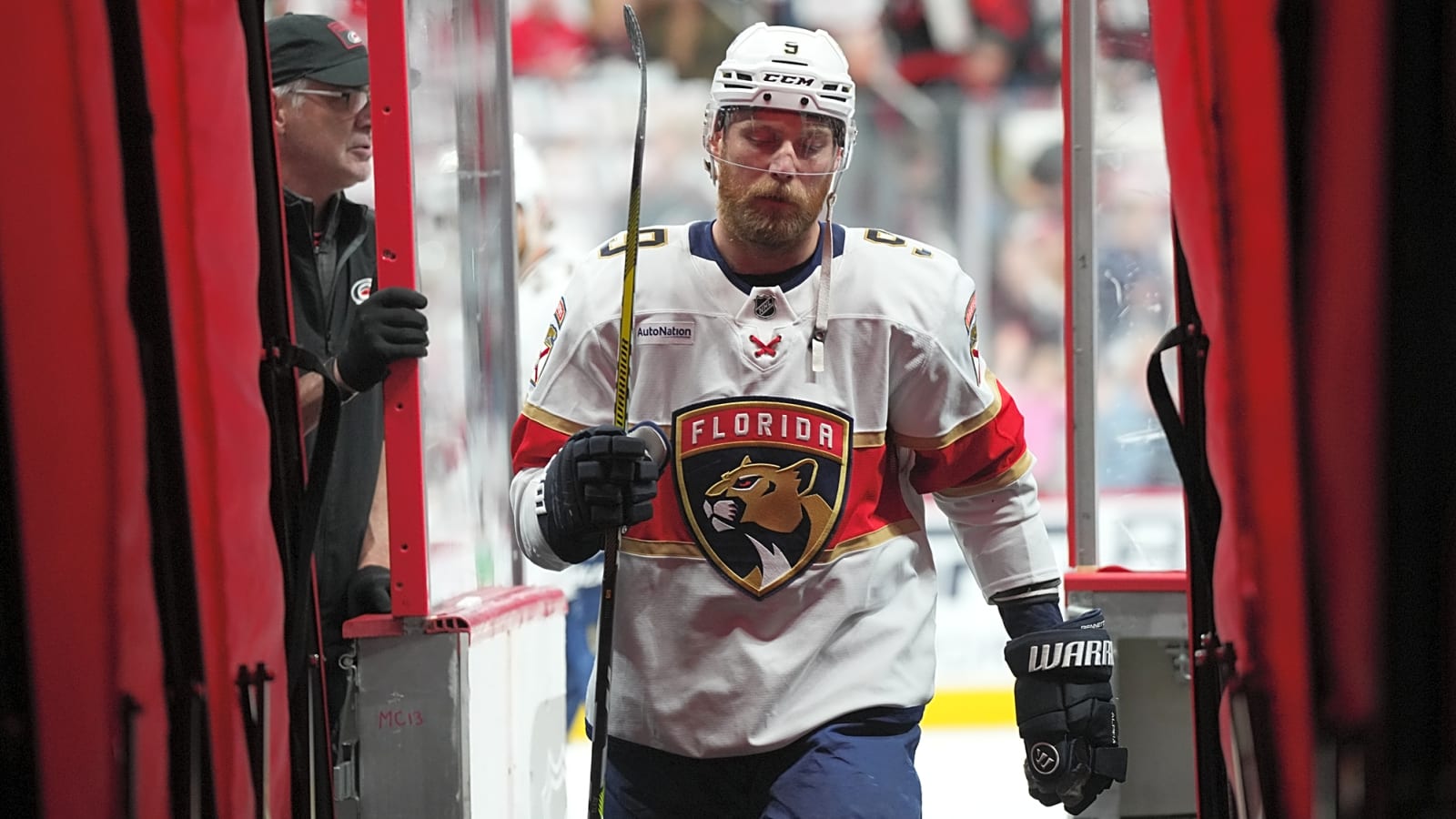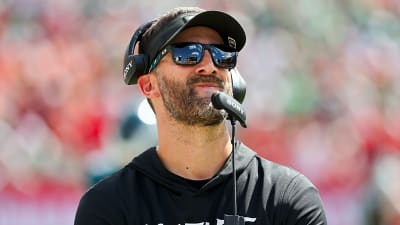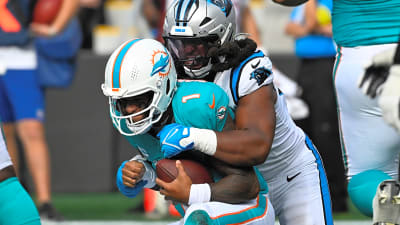
Sam Bennett has become a polarizing figure in recent weeks, ever since the Leafs were unceremoniously eliminated from the NHL playoffs.
There’s speculation that the 6’1” centre could command as much as $10M a year in free agency. As ridiculous as it sounds, in a free agency period where NHL teams have a lot more money to spend and very few centres available to pay, it makes sense that a player with the physical profile and winning pedigree that Bennett has would garner a ton of interest.
It wasn’t always like this for Bennett. While more recent memory tells the story of a Stanley Cup Champion, a perfect playoff player who averages around 55 points over an 82-game season, the start to his NHL career was less than ideal.
At one point, the former fourth overall pick was considered a bust. With just 140 points over 402 games for the Calgary Flames (a 28-point pace over 82 games), at just 24 years old, the power forward was sent packing to Florida for Emil Heinemen and a second-round pick.
Two paths, one Decision
As a result, this player has sparked controversy among Leafs Armchair GMs across the fanbase. Some will say the Leafs need what he brings, and to acquire him, whatever the cost. Others say, ‘Don’t overpay for a Sam Bennett; find the next Sam Bennett.’
We’ve already discussed why the Leafs should sign Sam Bennett in a previous article; I’m here to provide the alternative theory.
If the Leafs want to find the next Sam Bennett (a young player that’s on the outside looking in that could break out in a new situation), who would they be in this year’s NHL?
My model
I had this article in mind earlier this week, and as a result, I created my own NHL player model (think of it as my version of JFresh) specifically to find these types of players. All the statistics used to build my model are pulled from Natural Stat Trick, and they are all 5v5 metrics.
Firstly, I want to provide a quick breakdown of the player cards, which I’ll be using for all four players I’ll be discussing today.

Above you can see Auston Matthews’ card. The overall score is a three-year average (assuming the player has played at least 20 games all three years). If a player has only played one year, then it would just be their score for this year. The remaining stats are for this past season only, although you can see the players’ progression over the last three years in the bottom table.
The data
Chance Creation: This is exactly how it sounds, how effective is the player at creating expected goals, as well as scoring chances? xGF and High–Danger scoring chances are weighted more than Low–Danger scoring chances.
Playdriving: This is where points per game get factored in, but also includes factors like how much the player attacks with the puck (Indv. Rushes), and how heavily involved they are when their team scores while they’re on the ice (IPP and Primary Points %).
Intangibles: My friends have made fun of me for naming this category the way I have. “Making intangibles, tangible, what are you talking about, man?” In essence, this measures how physical the players are (Hits and Blocks) while also factoring in how it impacts the team from a penalty-taking and drawing perspective.
Finishing: How effective is the player at scoring or finishing their chances? The first measurement is their actual goals scored compared to their expected goals, and the second measurement is just pure shooting percentage.
Chance Suppression: This is basically the opposite of chance creation. How good are you at limiting opponent scoring chances when you’re on the ice?
Possession: This one is pretty straightforward; it’s the three primary possession metrics in Hockey Advanced Analytics (Corsi, Fenwick, Shots For). It aims to measure how often the team has the puck and controls the pace of the game when the player is on the ice.
Role Difficulty: This one is mainly based on time on ice; the idea is that the more you play, usually the better the players you face. Other factors I wanted to include were also defensive zone responsibilities. Which players do coaches trust to start in the defensive zone, and also which players take the most defensive zone face-off shifts?
Forwards
Alex Turcotte–C–5’11”–Los Angeles Kings

I know people won’t be happy with the inclusion of Turcotte in this article because he doesn’t fit the physical profile of Sam Bennett. I promise he’ll be the only player on this list who’s under 6’0” tall.
However, like Bennett, he’s only on pace for an average of 24 points over 82 games to this point in his career. Additionally, like Bennett, he was also a former Top 5 Pick.
While Turcotte’s physicality has been hit or miss, there are a ton of really promising signs to his game this year. His role difficulty had a slight uptick in his second year, and he actually showed significant progression, almost across the board.
Despite a relatively sheltered role, he put up elite possession and chance suppression numbers while also creating tons of chances when he’s on the ice.
He’s being blocked in the lineup by LA and could really flourish with more consistent playing time. I think his physical profile makes him an unlikely fit here in Toronto (unless we’re going for a Nick Robertson for Turcotte swap?), but I do think he’s a player that could break out in a big way if he can get an opportunity elsewhere.
Yegor Chinakov–RW–6’1”–Columbus Blue Jackets

Chinakov might be my favourite player from this list. While he’s historically not a physically demanding player, in a healthy season, he would have been on pace for 128 hits this year, which would have put him fourth among all Leafs forwards.
This is the second consecutive year where Chinakov’s advanced analytics have shown great promise. He’s maintained his elite play-driving numbers from last year and then improved his chance creation and possession numbers this season to offset a fall in his finishing (which is still very good).
Chinakov has never been a great defensive player, but if the Leafs are looking for secondary offence and scoring, this is the player to acquire. His career points pace of 33 points over 82 games isn’t elite by any means; however, this is a player that drives play, ramped up his physicality this past year and can score goals.
Chinakov was in the midst of a breakout campaign with 14 points in his first 21 games with Columbus before an upper-body injury sidelined him for 39 games. While he was gone, players like Fantilli, Marchenko and Voronkov blossomed, and Boone Jenner returned from injury.
By the time Chinakov was back in the lineup, he was playing in the bottom-six and struggled, putting up just one point in the eight games after his return. He was then a healthy scratch for Columbus in 13 of their 14 remaining games.
Considering he’s only 23 with great advanced numbers from the last two years, and only making $2.1M against the cap this upcoming season, he seems like the perfect candidate to break out in a top-six role with Toronto.
Elmer Soderblom–LW–6’8”–Detroit Red Wings

You want to add some size to this group? How does 6’8” sound? When Elmer Soderblom plays for the Detroit Red Wings, he plays well.
The issue is, he doesn’t play a ton for them. He’s played just 47 games over the last three years for the Red Wings, and with players like Kaspar and Mazur making their way to the big team for the 2025–2026 season, it may be the perfect time for Toronto to take a chance on the 23-year-old.
He might be a player Detroit look to keep around, especially with a strong stretch after the 4 Nations break that allowed him to stick in the NHL with the Red Wings, but if available, I think Toronto would love a player like him.
For a 6’8” player, Soderblom was surprisingly not very good defensively last year, but he showed in years past that he’s capable of being a reliable defensive player, and he’s very hard to play against.
What’s promising is that his play-driving and possession numbers have been consistently strong. His chance creation metrics were also good this year to offset a rough year from a finishing perspective.
Defenceman
Jacob Moverare–LD–6’3”–Los Angeles Kings

I know I’ve highlighted him before, but I still cannot understand why the Kings choose to lean on Joel Edmundson more than Moverare.
He only got into three games for LA in their first-round series against Edmonton, and despite being 26 years old, is a player I would love for the Leafs. He hits enough for a defenceman, blocks shots like a demon, and has elite chance suppression and possession numbers.
Simon Benoit impressed me in the playoffs this year despite a pretty terrible regular season, but I wonder if Moverare could adapt to playing on his offside (he’s done it in the past for LA) and serve as a cheaper option to Oliver Ekman-Larsson.
While Ekman-Larsson has performed admirably on his offside for Toronto, his puck-moving ability was neutered by having to play in that role. At 33 years old, with another three years left at $3.5M, I wonder if finding a cheaper and younger alternative like Moverare, who’s clearly ready for a full-time NHL role, is perhaps the smart thing to do.
The go to guys
There are a flurry of other names I considered but chose not to write an article on (Jack Thompson, Jayden Struble, Zac Jones, Peyton Krebs, Mavrik Bourque, and Joe Veleno).
More must-reads:
- Phillies reportedly make decision on manager Rob Thomson
- Steelers' Mike Tomlin has strong feelings about Browns trading Joe Flacco to Bengals
- The 'NFL 250-passing-yard game leaders' quiz
Breaking News
Trending News
Customize Your Newsletter
 +
+
Get the latest news and rumors, customized to your favorite sports and teams. Emailed daily. Always free!








